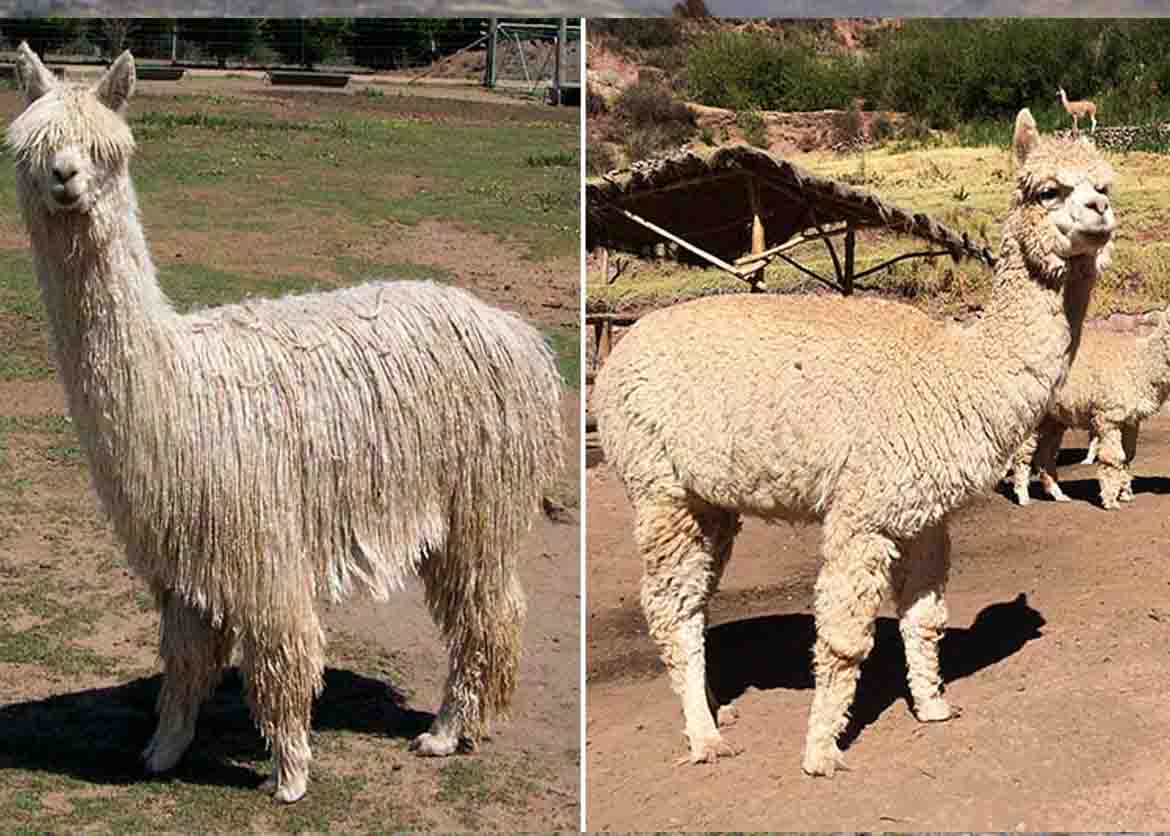
Suri alpacas and Huacaya alpacas are different both in physical appearance and in the specific characteristics of their fiber. Suri alpacas appear more angular and slender due to their long, lustrous fibers that hang down against their bodies, as opposed to growing perpendicular to the skin the way Huacaya fiber does.
Difference Between Suri Fiber and Huacaya Fiber
The Suri fiber, like Huacaya, can be very fine and silky, but has no crimp (or rather, should not) and thus Suri is best suited for woven goods. Its tight scale structure makes Suri difficult to dye and Suri fiber is more difficult to work with, as it is relatively heavy when compared to similar animal fibers.
Huacaya fiber shares more similarities with sheep wool than Suri, as Huacaya fleece is soft, fluffy, and crimpy. This natural crimp provides greater elasticity in Huacay yarn, making it a good choice for knits. The Huacaya’s scale structure allows it to accept dyes more readily.
The average annual staple length of Suri fiber is 4 to 6 inches, whereas the average annual staple length of Huacaya fiber is 3 to 5 inches.
Suri Fiber and Huacaya Fiber
Suri fiber often feels cool to the touch, which may be due to the fact that more of its straight fibers make direct contact with our skin, thereby absorbing more heat from our hands. It is thought that the denser the Suri, the cooler its fiber lock will feel.
Whereas the Suri has coiled locks of fiber that hang downward, the Huacaya has crimpy fiber, which acts like small springs and grows perpendicularly to the body giving Huacayas their rounded, fluffy appearance.
Huacaya fiber is more abundant and enjoys greater popularity in the world market. Only a small fraction of the world’s alpaca population is Suri.
Suri and Huacaya have different scale structures. The Huacaya has a balanced ortho- and para-cortical structure, which makes its fiber curl. The Suri fiber contains an abundance of para-cortical cells, which keeps its fiber straight. The Suri fibers have different scale shape, height, and distribution than the Huacaya. This straight fiber with long, few, and smooth scales give the Suri its signature luster. The bolder, deeper crimp in Huacaya with fast-growing fiber is indicative of length scales, which in turn create its signature brightness.
References:
